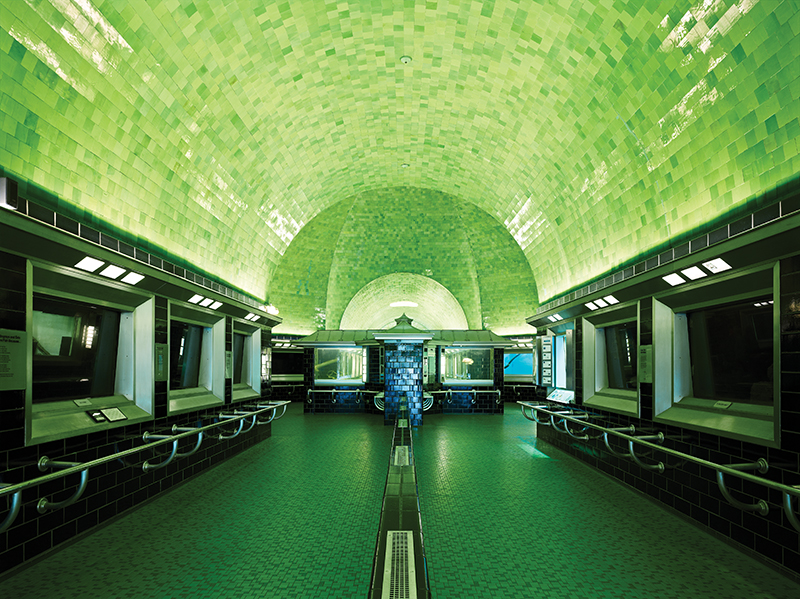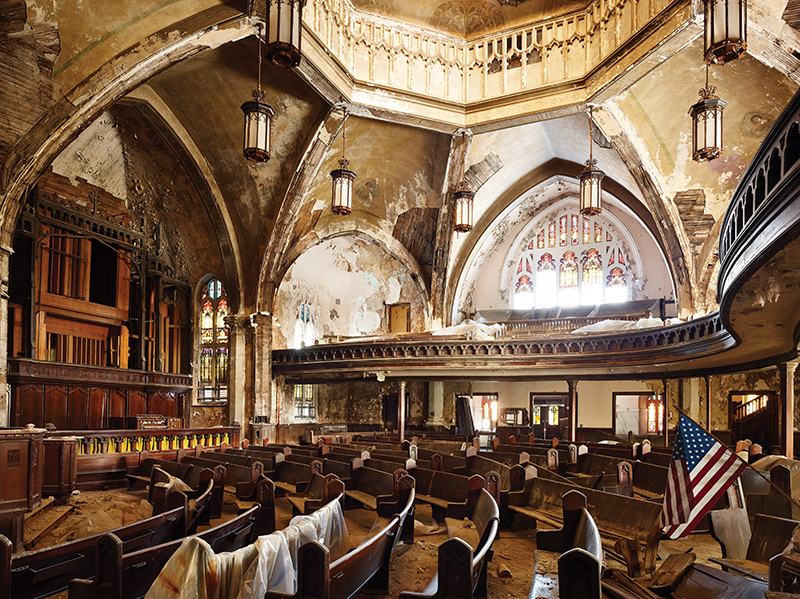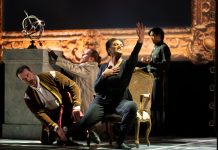
In 2010, photographer Philip Jarmain stood outside Michigan Central Station at dusk. The building, when it opened for service in 1913, was the tallest rail station in the world. Once a glorious beacon of the Beaux-Arts architecture style, the building had fallen into ruin since it closed in 1988.
Jarmain set up his camera and waited for the perfect light. “It was really cold,” he recalls. “Well below freezing.” And he clicked the shot. It was the first image in a series that he would later call American Beauty.
The collection — 18 images standing 5 feet tall — was first presented at a show in San Francisco in 2013. The idea behind their size was to show the architecture in detail “so you wanted to see the hand-painted ceilings, you wanted to see the ornate plaster work,” Jarmain says.
He has continued photographing in Detroit since then. He’s now in the midst of a Kickstarter campaign to raise the money needed to turn the series — which has grown to 60 images — into a photo book. If successfully funded, it will be available this fall.

Jarmain’s goal was to document the opulence of pre-Depression-era architecture in
Detroit. “It [was] one of the most significant cities in the world in the Industrial Age,” he says. The city’s architecture rivaled that of New York, Chicago, and London.
He took his first pictures when the city was still reeling from the 2008 financial crisis and continued photographing throughout the years after Detroit filed for bankruptcy.
Jarmain, who lives in Vancouver, took more than a dozen trips to Detroit while working on the American Beauty series. He connected with local historian Sean Doerr, who taught him the history behind each building. “We’d start our mornings at Coney Red Hots in Highland Park,” Jarmain recalls. “We’d go there for breakfast” and then spend most of the day scouting locations.
All the exterior shots were taken at dusk, the “magic hour where you don’t get any harsh shadows [and] you get this nice glow on the buildings.”

In some ways, Jarmain’s project was a race against time. These pre-Depression-era buildings were already crumbling. They were especially vulnerable when it became clear that the city didn’t have money to spend on preservation. Many were torn down in the months — or even just weeks — after Jarmain photographed them.
The American Beauty Electric Iron building off Woodward Avenue, designed by the prolific architect Albert Kahn, was erected in 1908. “It had these huge steel letters that were falling apart but were above the building that said, ‘American Beauty,’” Jarmain says. “I really wanted to photograph it.” Unfortunately, the building was demolished with very little warning two weeks before Jarmain planned to visit.
“I never got to shoot it,” he says. “That’s why the project is called American Beauty. It’s the photograph that never actually happened.”
Fortunately, there were many other photos that did actually happen, including a haunting shot of the Michigan Theatre, which was famously featured in Eminem’s 8 Mile. The theater, which was built in 1926, briefly became a nightclub in the 1970s. Later, the interior was gutted and turned into a parking lot. Still, the building maintains the theater’s iconic ceiling. “It’s pretty surreal that there’s a three-level parking garage inside an abandoned theater with that palatial ceiling from the original theater,” Jarmain says.

In a way, the Michigan Theatre’s transformation into a garage is fitting. It was originally built on the site of the garage where Henry Ford invented his first automobile: the quadricycle.
Jarmain had the idea to compile his photo series into a book a few years ago and to accompany each shot with a history of the building. But it didn’t happen. “The problem was time. It takes a long time to write the history behind each building, edit it, and do all the layout design,” he says. “The one thing that COVID-19 did [give me] was time to actually put the book together.”
Ultimately, he selected nearly 60 images that tell a story about the city, embracing the dichotomy between opulence and ruin, loss and recovery, past and future.
“I think it’s important that Detroit recognize that they have some of the most important architecture in North America. They need to do the best they can to take care of it,” Jarmain says. “Obviously, now, it’s tough times, but I think Detroit will make it through this. You know the city motto of Detroit? It’s ‘Detroit will rise from the ashes.’”
Philip Jarmain’s American Beauty photos are available as fine art prints through kostuikgallery.com. To learn more about Jarmain’s project and upcoming book, visit philipjarmain.net.
|
|
|










